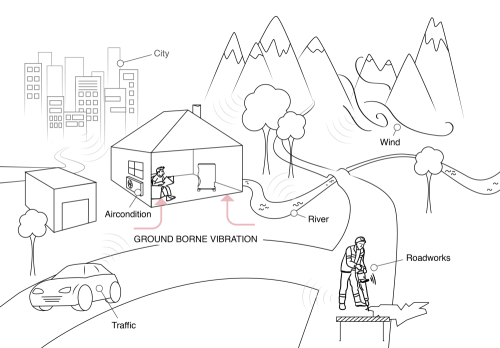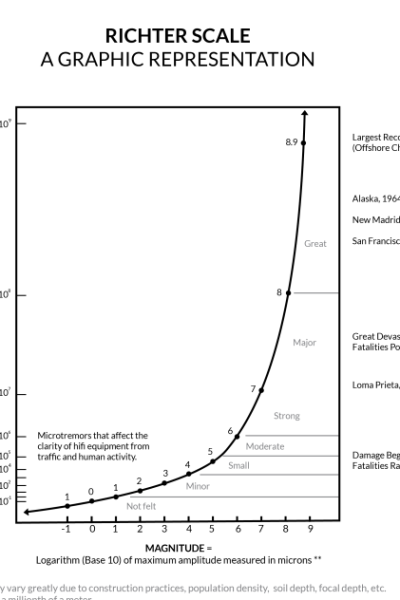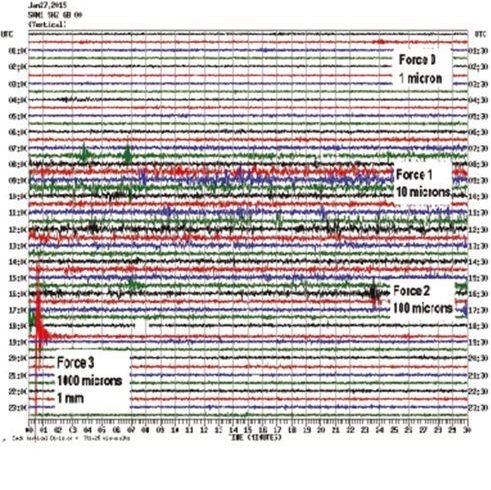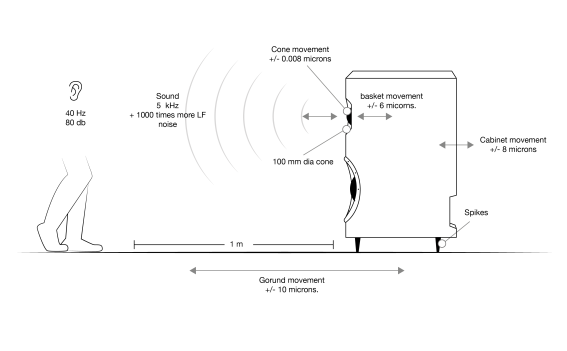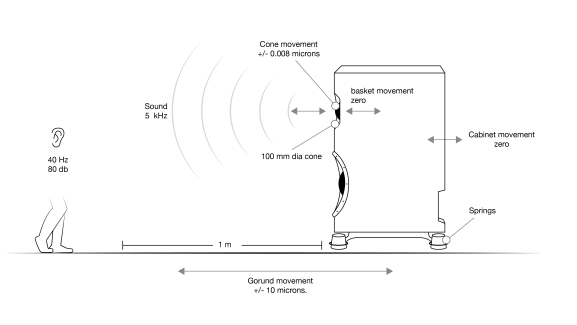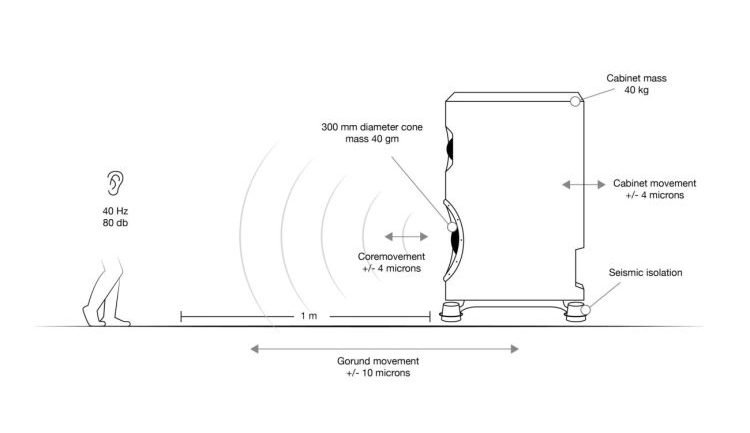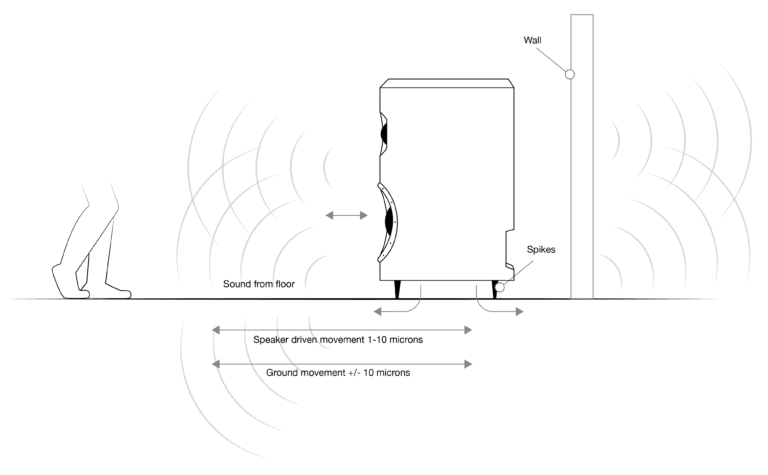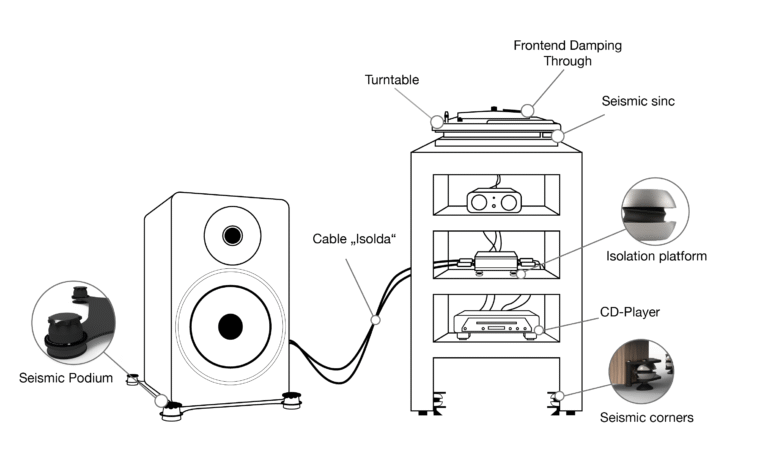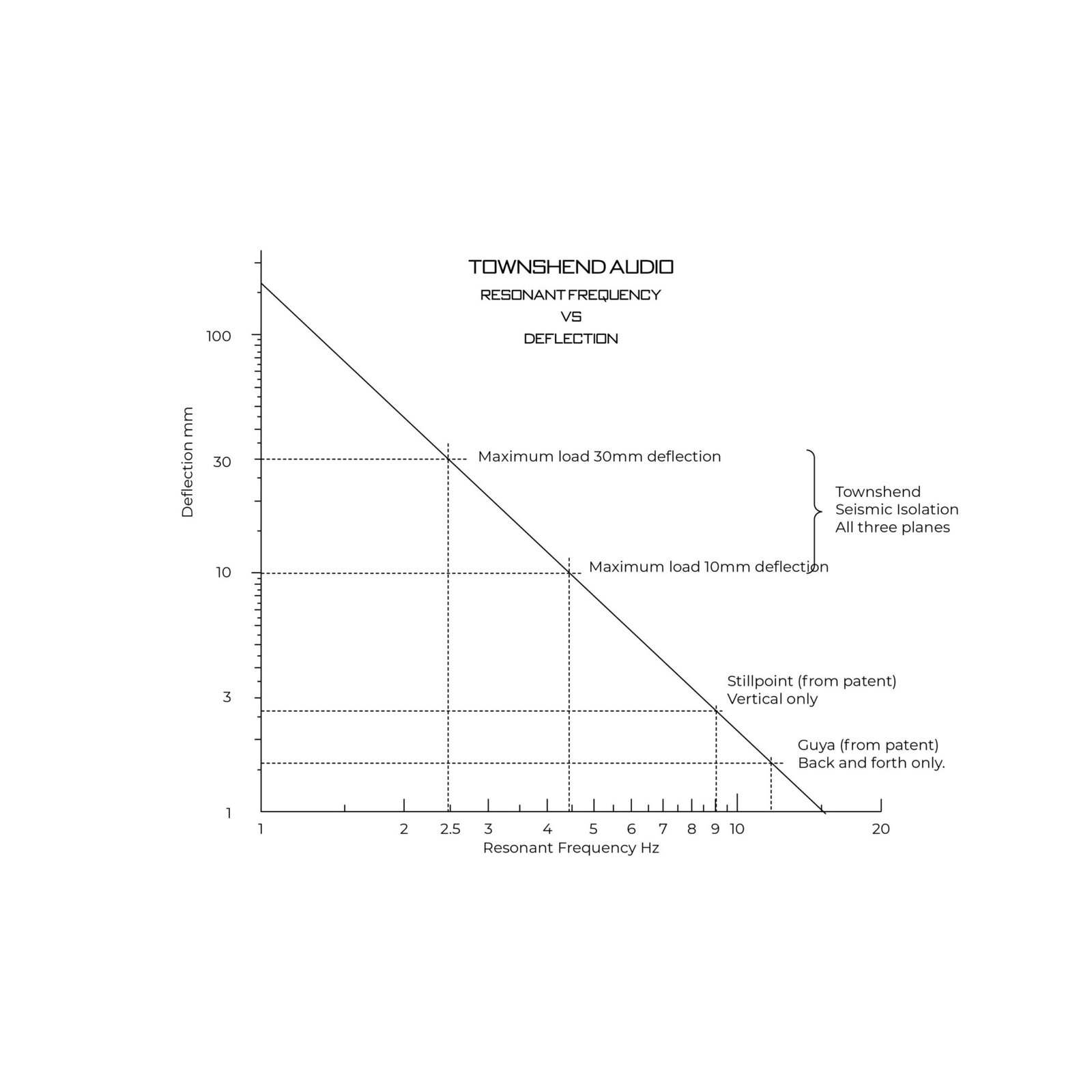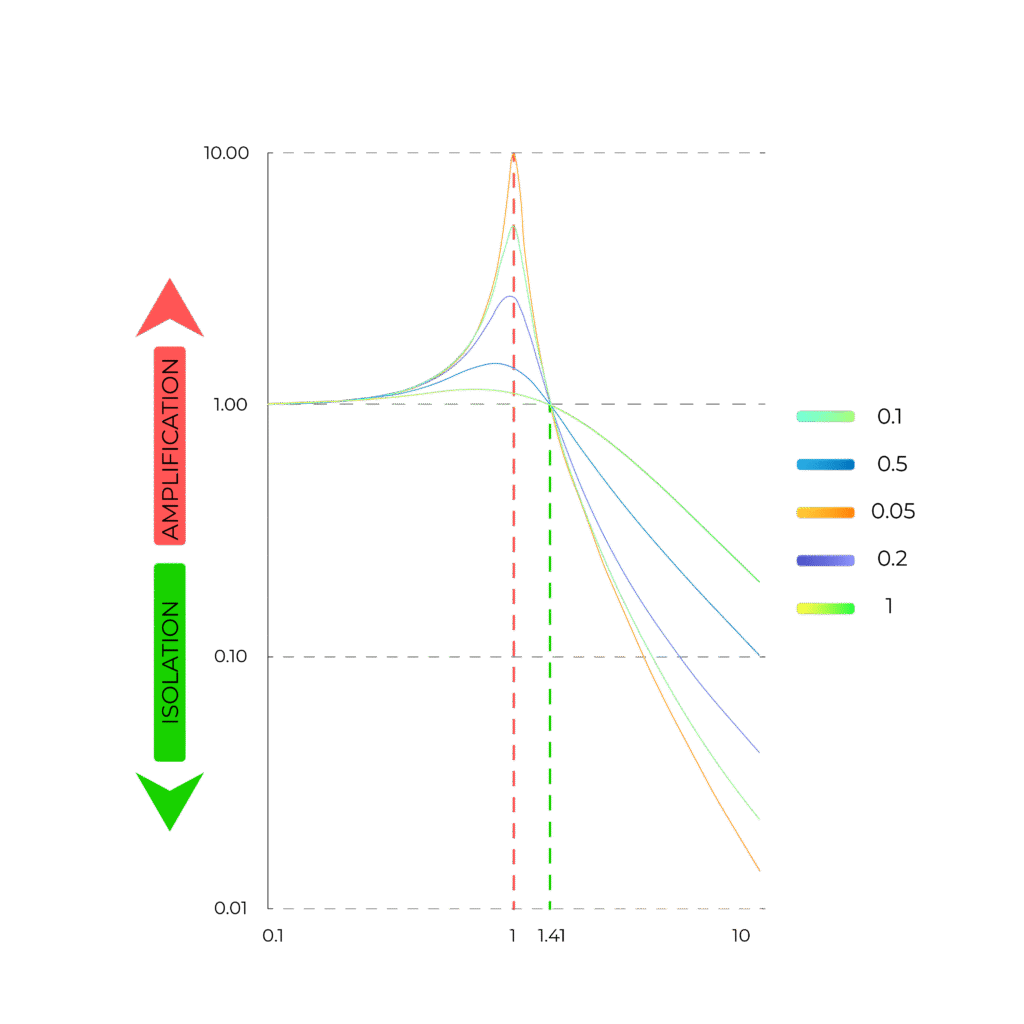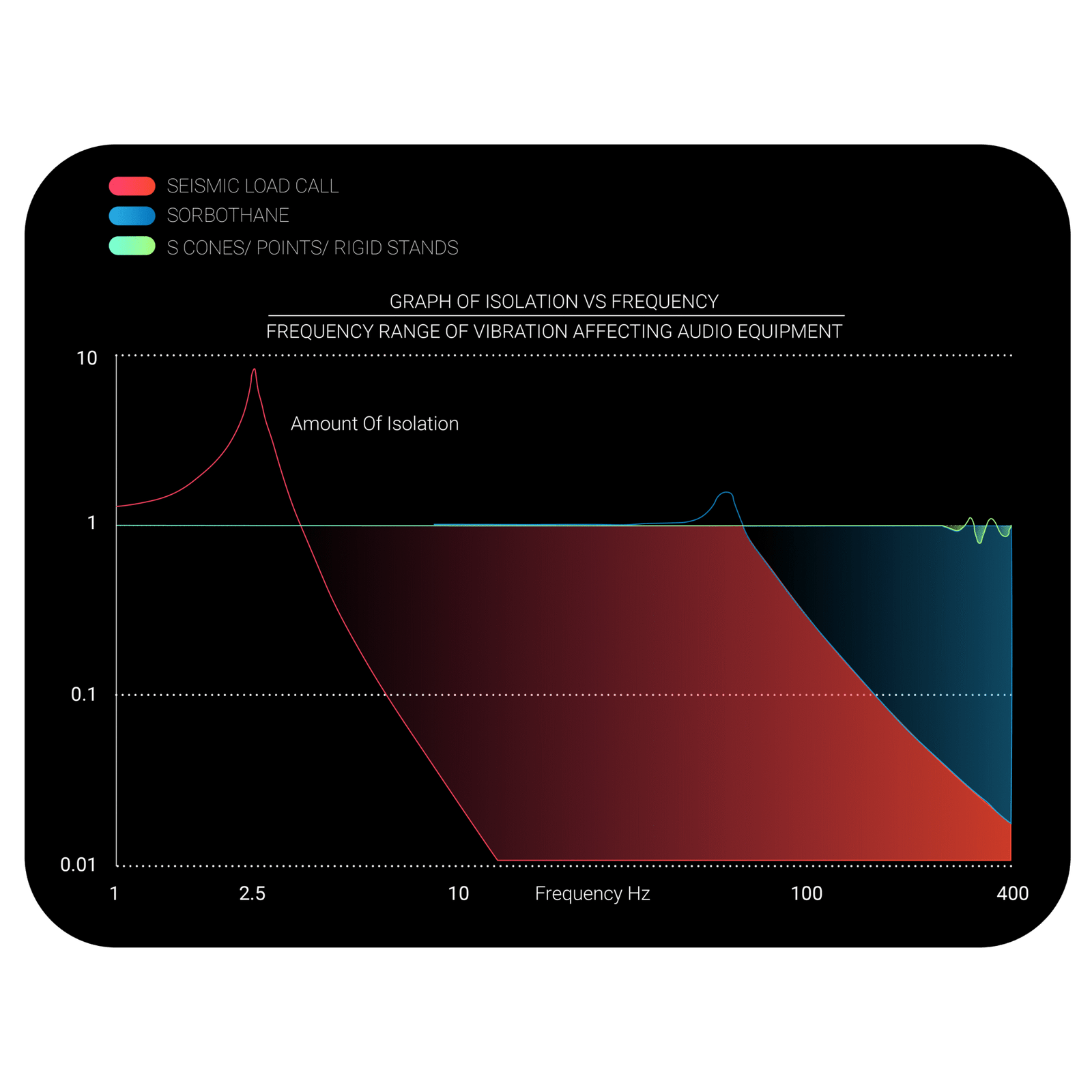Conventional so-called rigid supports (spikes or cones) aim to hold the speaker cabinet ‘still’ at audio frequencies. However, there will be a resonance set up by the mass of the cabinet reacting with the unavoidable springiness of the floor, even concrete floors. This can cause vibration of the whole building structure in the audio band, which can be very audible to your neighbours. This ‘rigid coupling’ is shown by the black line in the transmissibility graph – a transmissibility of 1. Rigid coupling also transmits building-borne vibration back into the speaker cabinet and thence to the speaker driver baskets where it is superimposed onto your own music and also into other components in your audio system.
The solution is to isolate your speakers from the building structure using a low-pass filter, in other words to let them ‘float’ throughout the audio waveband. This can be achieved by using Townshend Seismic Load Cells.
They work by coupling the mass of the speaker cabinet to the building structure, usually the floor, via a spring. At very low frequencies, the supported mass (speaker cabinet) follows the (slow) movement of the floor with a transmissibility of 1, just as with the rigid coupling. As the frequency of movement of the speaker cabinet (caused by reaction to the movement of the speech coil as it plays music) rises, a point of resonance is reached where it oscillates a large amount for a small input, 3.5Hz in the example in the graph. This large resonant oscillation can be tamed by damping. As the frequency rises further, the movement of the speaker cabinet reduces, ultimately at a rate of 12dB per octave, the orange line in the transmissibility graph. For audio systems, this reduction in coupling between the speaker cabinet and the building structure should start at about 5Hz. This resonant frequency of oscillation depends on the mass and spring rate, but it can be shown to be 3.5Hz if the compression of the spring when loaded is about 30mm. In this way a spring can be selected for any speaker cabinet to give a resonant frequency of 3.5Hz.
Since Seismic Load Cells are bi-directional they also reduce the effects of building structure vibration from entering your speakers. Furthermore, they act equally in all three planes, thus counteracting all aspects of building structure vibration.
For large displacements and without any damping, the speaker cabinet would oscillate for quite a long period, as is common with undamped sprung turntables. In the Seismic Load Cell this oscillation is rapidly damped by the turbulence of the air passing through the hole in the bellows/small-hole resistive damping arrangement, as shown by the dotted orange line. When at rest there is no resistance, and full isolation performance is realized. The orange shaded area in the graph shows the high level of isolation achieved by using Seismic Load Cells, compared with that from spikes and cones.
As a listener, you experience the Townshend Floating Effect – the sound improves dramatically and becomes independent of the speakers, providing wider stage width and greater depth, together with tighter and more realistic bass, thuddy boom now eliminated. You will be able to enjoy your music at its natural volume level – as if you were listening to a live performance – without annoying the neighbours!
Rigid devices such as cones and spikes do not isolate, they couple. Springs made of rubber compounds, such as Sorbothane, are partially successful, but they don’t act as springs at frequencies below about 50Hz. Much of the musical energy which can stimulate vibration of the building structure is contained at lower frequencies, at which these compound springs act effectively as couplings with a transmissibility of 1, as shown by the green line on the transmissibility graph. The effectiveness of Sorbothane speaker mounts, shown as the green dotted area on the graph, is thus severely limited. Magnetic repulsion ‘spring’ mounts are only partly successful because they cannot operate in all three planes without some form of mechanical restraint (Earnshaw’s theorem), which detracts from their effectiveness. Unlike these and all spikes and cones, Townshend Seismic Load Cells act equally in all three planes.
